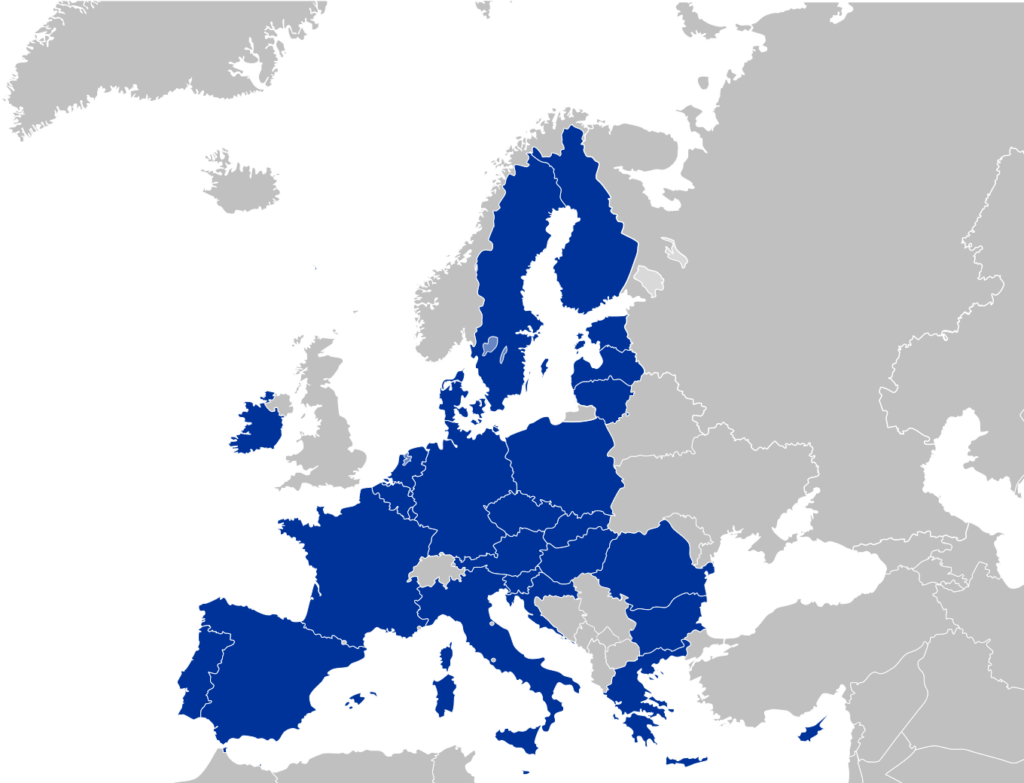
According to Wikipedia, European Union is the second largest consumer market in the world. The United States is ranking first. Any company in the world is thinking about being present in the EU market. It can get expensive, especially for the small and midsize companies.
Here is how to find buyers in Europe efficiently: Utilize the internet. 1. Prepare an appealing website to present your product well in the local language. 2. Do some market research online, to learn the culture and competition. 3. Generate a target group. 4. Hire local freelancers to translate your materials and advertise your products to the locals.
How EU consumer market works
European Union consists of 28 member states (countries). There are 512 million people living in the EU, who speak 24 different languages.
The EU Single Market refers to one territory without any borders, or regulatory obstacles to the movement of goods and services. This means when products are manufactured or imported to the EU they can be freely sold and transported to other member countries inside the EU. This stimulates competition and trade, improves quality and efficiency, and helps to cut prices. It has triggered economic growth and made the everyday life of European businesses and consumers much easier.
When it comes down to global trade, the EU is the biggest trader in the world. The EU accounts for 16% of the world’s imports and exports. It is the biggest exporter of manufactured goods, and the biggest import market in the world. Statistically people do consume more in the United States, but the US is more closed for imports.
Europe has become very well integrated into global markets. The EU supports foreign businesses wanting to export into the EU by providing clear facts on the rules and requirements for importing into the EU.
The EU has a number of trade agreements with its partner countries and also sees trade as an important factor for the development.
However, when the EU sees its economy and industry harmed by dumping, or subsided imports, it applies trade defence mechanisms.
Selling B2B vs B2C in Europe
When targeting European market you should understand that it consists of different cultures, and countries speak different languages. You need to deal with different mentalities and traditions. The first issue you need to deal with is language barrier. Technically it is quite easy and fast to make yourself visible to potential businesses and consumers on the internet. The main ways to do it are email marketing, paid advertisement and SEO. But still, you need to have a strategy and tactics in place. And remember it will not happen overnight.
But there is a difference, whether you are approaching businesses (importers) or retail clients. See, usually the business has somebody who can speak English, so this makes things little bit easier for you. You can talk to them and have a written dialogue. When succeeding to establish a partnership thing will get smoother, but don’t forget to honor the local culture.
However, when preparing ads and product descriptions to the retail clients, you need to be very precise in knowing the consumer behaviour and correct local language. Here you definitely need help from a local freelancer, or digital agency. Most cost effective way would be to sell products online, in a local language with a local approach.
It is more expensive to sell to retail clients (B2C) than to businesses (B2B)
To sell your products to resellers (B2B) you need to talk to one person. To sell to consumers (B2C) you need to communicate your message to the masses. The latter is more expensive. Because creating sales materials, paying for advertising, and administering the after sales takes more money and effort.
How difficult is it to sell to European consumers?
First of all, who is the typical consumer in Europe? As said European market has over 500 million consumers. But the majority of the consumer spending happens in Northern- and Western Europe, as these countries are wealthier.
These people prefer quality products. It should look and feel good, it should work well, and last.
So, to enter the market and gain the market share, you better have a quality product. Your marketing should be appealing, for this you can use the local agencies and freelancers.
Europe is also known for consumer rights.
Finding clients using internet vs doing it in a traditional way
When entering European market from outside, there are different ways to do it. In business it always boils down to finances and productivity. The less you pay for the same outcome, the more successful you become. Every sustainable business needs to be profitable enough to have the funds for research and development, take care of its employees, and to satisfy its investors.
If you follow the traditional path, a company has to do market research, contact trade organisations, network with business partners and friends, exhibit products in the trade shows, travel to visit companies and events, hire marketing and sales personnel, etc. It is expensive. Especially for small and midsize companies, or when business is just starting out.
However there is a way to be more efficient nowadays. Use the internet, hire freelancers and digital agencies, use online marketplaces etc.
Summary for finding buyers in Europe on a low budget
- Plan in what country you want to sell, EU has different languages and cultures.
- Do some market research regarding consumers, competitors, etc. Hire a freelancer, or do it yourself.
- Decide if you want to do B2B or B2C
- Prepare very good digital materials about your product and company.
- Do paid ad campaigns and contact resellers directly. You need to develop a prospect gaining ratio to follow. This means, for example, out of every 100 clicks you get one client.
